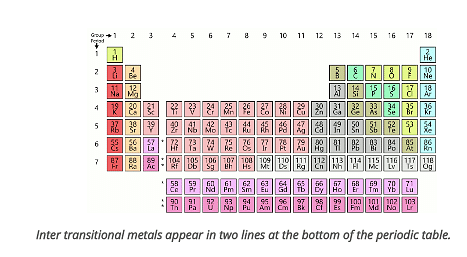Question:
The most stable oxidation state of lanthanides is
The most stable oxidation state of lanthanides is
Updated On: Jun 8, 2024
- 2
- 4
- 0
- 3
Hide Solution
Verified By Collegedunia
The Correct Option is D
Solution and Explanation
The general electronic configuration of lanthanides is
$[X e](n-2) f^{1-14}(n-1) d^{1} n s^{2}$
$\because$ After the loss of both of the 65 electrons and also the solitary $d$ electrons, the lanthanoids gain stable configurations.
$\therefore+I I I(+3)$ oxidation state is most common among lanthanides.
$[X e](n-2) f^{1-14}(n-1) d^{1} n s^{2}$
$\because$ After the loss of both of the 65 electrons and also the solitary $d$ electrons, the lanthanoids gain stable configurations.
$\therefore+I I I(+3)$ oxidation state is most common among lanthanides.
Was this answer helpful?
1
0
Top Questions on The Lanthanoids
- Which trend is correct regarding ionic radius in the 4f-series (lanthanides)?
- MHT CET - 2025
- Chemistry
- The Lanthanoids
- The first and second ionization enthalpies of lanthanoids are comparable with the element
- KEAM - 2025
- Chemistry
- The Lanthanoids
- What is the formula of lanthanoids with sulfur?
- KEAM - 2025
- Chemistry
- The Lanthanoids
- Number of colourless lanthanoid ions among the following is ____.
\[ \text{Eu}^{3+}, \, \text{Lu}^{3+}, \, \text{Nd}^{3+}, \, \text{La}^{3+}, \, \text{Sm}^{3+} \]- JEE Main - 2024
- Chemistry
- The Lanthanoids
- The Lanthanoid ion which would form coloured compounds is ------------.
Atomic numbers: Yb = 70, Lu = 71, Pr = 59, La = 57- COMEDK UGET - 2024
- Chemistry
- The Lanthanoids
View More Questions
Questions Asked in JKCET exam
- 5 books in Math and 3 books in Physics are placed on a shelf so that the books on the same subject always remain together. The possible arrangements are
- JKCET - 2024
- Permutations
- If the length of a chord of a circle is equal to that of radius of the circle, then the angle subtended in radius, at the centre of the circle by the chord is
- Which of the following is a null set?
- Which of the following statement is true?
- Trans-esterification is a reaction between
- JKCET - 2024
- Organic Chemistry - Some Basic Principles and Techniques
View More Questions
Concepts Used:
Lanthanoids

Lanthanoids are at the top of these two-row, while actinoids are at the bottom row.
Properties of Lanthanoids
Lanthanoids are inclusive of 14 elements, with atomic numbers 58-71:
- Cerium - Xe 4f1 5d1 6s2
- Praseodymium - Xe 4f3 6s2
- Neodymium - Xe 4f4 6s2
- Promethium - Xe 4f5 6s2
- Samarium - Xe 4f6 6s2
- Europium - Xe 4f7 6s2
- Gadolinium - Xe 4f7 5d1 6s2
- Terbium - Xe 4f9 6s2
- Dysprosium - Xe 4f10 6s2
- Holmium - Xe 4f11 6s2
- Erbium - Xe 4f12 6s2
- Thulium - Xe 4f13 6s2
- Ytterbium - Xe 4f14 6s2
- Lutetium - Xe 4f14 5d1 6s2
These elements are also called rare earth elements. They are found naturally on the earth, and they're all radioactively stable except promethium, which is radioactive. A trend is one of the interesting properties of the lanthanoid elements, called lanthanide contraction.